|
Hoover Dam
|
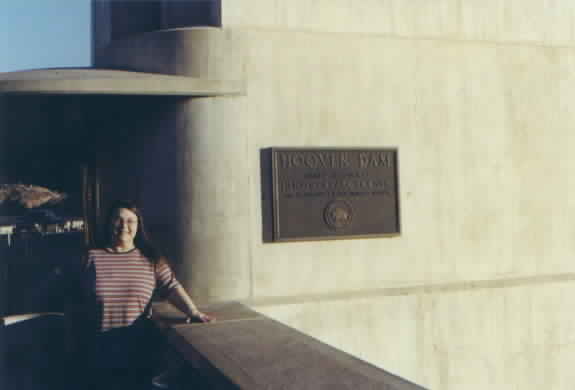
|
|
Hoover Dam is arguably the most famous dam in the US. It is not the
biggest anymore (that distinction probably goes to Grand Coulee), but it
is very accessible, being only 30 miles from Las Vegas, and close to a
million people a year take the tour, and millions more drive across. The
dam has a very colorful history (along with a little controversy, of
course). Construction began in 1931, and was completed in 1936, ahead of
schedule and under budget! We'll try to provide some links to the more
interesting and informational sites. Of course, the place to start would
be the USBR's
Hoover Dam Page. Hoover Dam has been declared a Nation Historic
Landmark, and the American Society of Civil Engineers has named it one
of America's Seven Modern Civil Engineering Wonders.
|
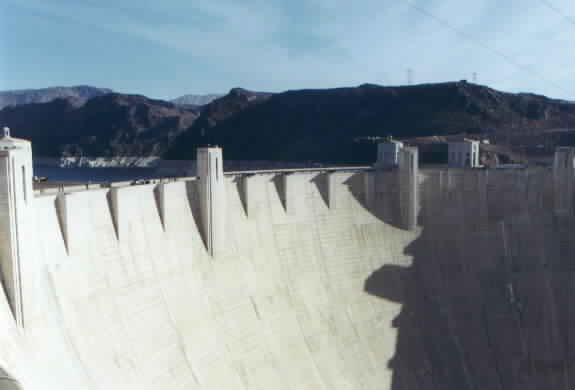
|
|
Hoover Dam is a concrete thick arch type dam, 726.4 feet high by 1,244
feet long: the "Hydraulic Height" is given as 576 feet. However
you measure it, it is a big dam! Not one but two power houses are here,
called the Nevada and the Arizona Power Houses (the Colorado River is
the State Line between the two here), with a total of 17 main and 2
station service generators for a nameplate capacity of 2,079 Megawatts.
(We were assured that none of this was wasted in Vegas: I never got the
chance to ask where Vegas was supplied from!). Hoover Power data is
here
. Total generation has been down due to a continuing drought in the
area: we sympathized because here in the southeast we are just
(hopefully!) coming out of an extended drought. Lake Mead was down some
85 feet during our visit.
|
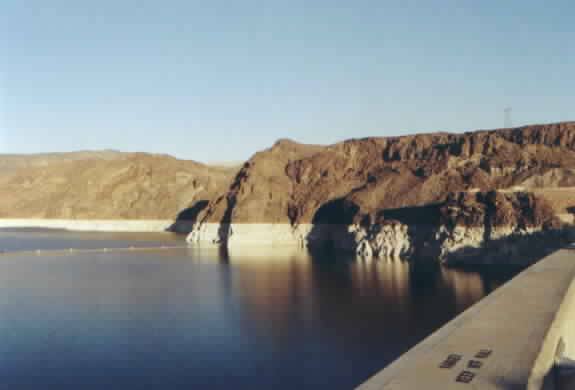
|
|
Speaking of Lake Mead, it is the largest reservior in the US. Maximum
pool is at 1229 feet MSL at which point it would be 7.5 feet above the
raised spillway gates. The reservior is supposed to be able to hold two
year's worth of average river flow. The fact that the lake is down 85
feet and yet there is still a reservior gives an idea of the scope of
the lake! (If Lanier was down 85 feet it would be empty! Well below its
minimum conservation pool of 1035, anyway...) Some of the capacity has been
consumed by sediment deposits, given as 91,000 acre-feet up until 1963,
when Glen Canyon Dam was closed about 370 miles upstream. That should
reduce sediment deposits significantly.
|
|
The water in Lake Mead is "hard water", hence the light-colored
deposits on the banks below the normal water line.
|
|
While we work on the final version of the page, here are some other
pictures...
|
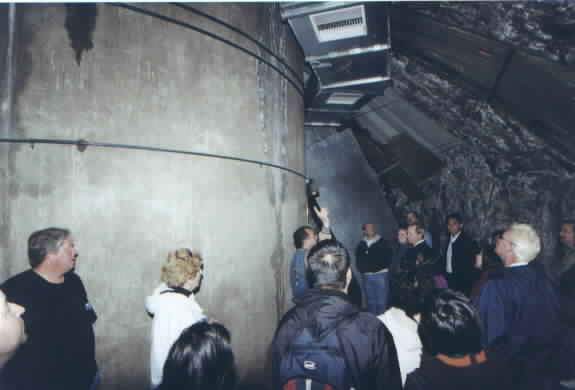
|
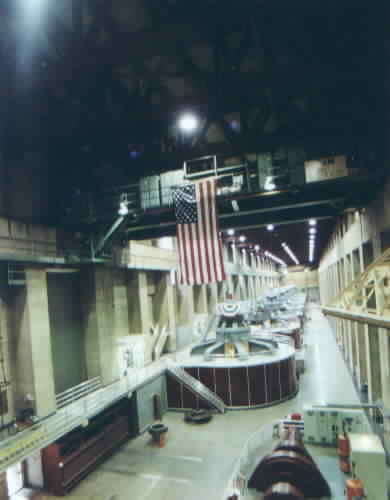
|
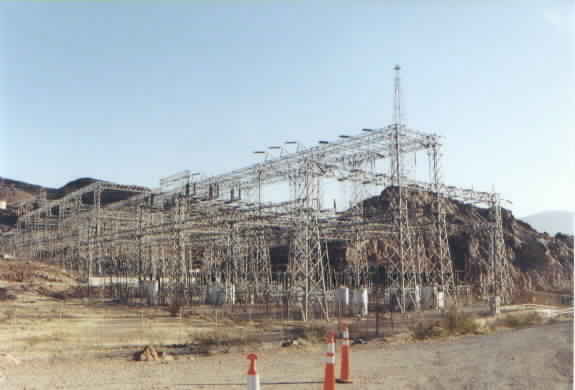
|
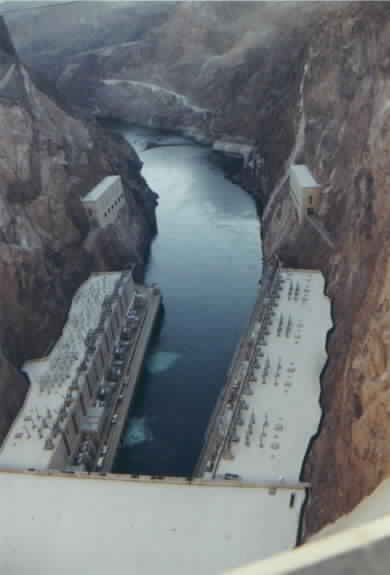
|
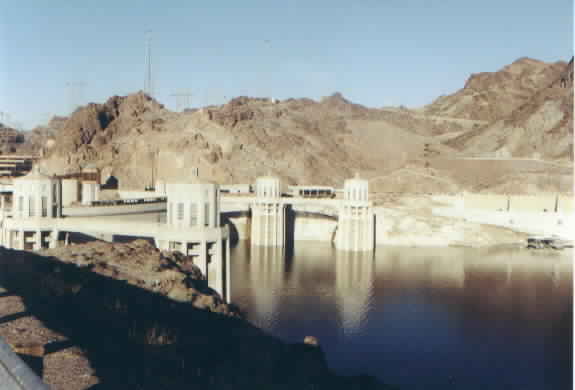
|
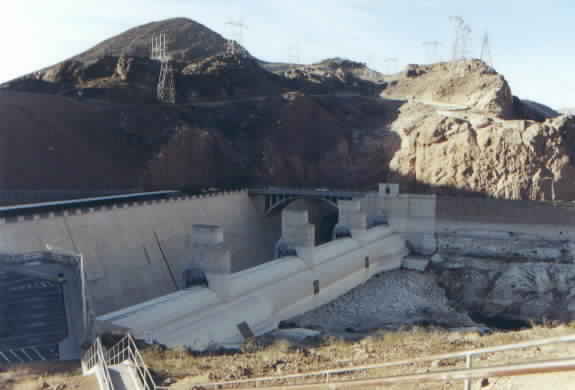
|
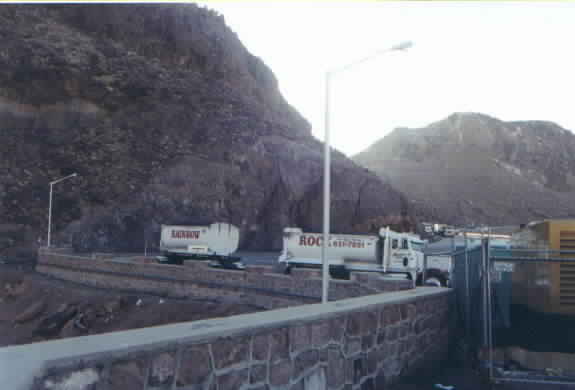
|
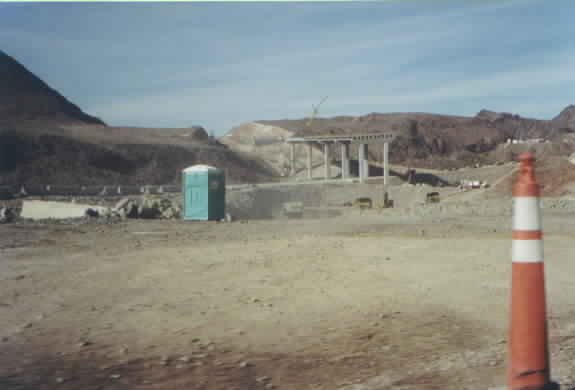
|
|
A bridge over the river is under construction, probably to be opened in
2006 or so. Here is a span on the Arizona side...
|
|
A picture from the
USBR...
|





















